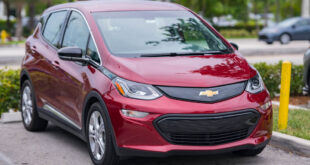Electric Car Charging Stations: A Comprehensive Guide Electric vehicles (EVs) are revolutionizing the automotive industry, and with this shift, the demand for electric car charging stations has grown exponentially. As more consumers transition to eco-friendly transportation, understanding how and where to charge EVs has become essential. In this guide, we’ll explore the different types of charging stations, their benefits, installation processes, and practical tips for EV owners.
Types of Electric Car Charging Stations
1. Level 1 Charging Stations
Level 1 chargers are the most basic type of EV charging. They use a standard 120-volt outlet, making them suitable for home use. While they are convenient, they charge at a slower rate, typically providing 3-5 miles of range per hour.
2. Level 2 Charging Stations
Level 2 chargers operate on a 240-volt system and are significantly faster than Level 1. They are commonly installed at homes, workplaces, and public charging locations. These stations can provide 15-25 miles of range per hour.
3. DC Fast Charging Stations
DC fast chargers offer the quickest charging solution, delivering 60-100 miles of range in just 20-30 minutes. These stations are typically found along highways and in urban areas, catering to EV drivers on the go.
4. Wireless Charging Stations
Wireless charging technology is emerging as a futuristic option. By using electromagnetic induction, these stations allow EVs to charge without cables, enhancing convenience and efficiency.
Benefits of Electric Car Charging Stations
- Convenience: Easily accessible charging stations make owning an EV more practical.
- Cost Savings: Charging at home or at free public stations can reduce fuel expenses.
- Eco-Friendly: Using renewable energy sources for charging minimizes carbon footprints.
- Increased Property Value: Installing EV chargers can enhance property value for homeowners and businesses.
Installation of Electric Car Charging Stations
Home Installation
- Step 1: Assess electrical capacity to ensure compatibility.
- Step 2: Choose the right charger type (Level 1 or Level 2).
- Step 3: Hire a licensed electrician for installation.
- Step 4: Test the charger to verify functionality.
Public Charging Stations
Public stations require significant planning and investment. Steps include:
- Conducting feasibility studies.
- Partnering with local authorities or businesses.
- Ensuring compliance with regulations.
Tips for Using Electric Car Charging Stations
- Plan your charging schedule to avoid peak times.
- Use mobile apps to locate nearby charging stations.
- Always carry a charging cable for emergencies.
- Check station compatibility with your EV model.
- Opt for renewable energy-powered stations.
- Avoid leaving your car parked after charging.
- Monitor battery health to maintain efficiency.
- Keep a backup power source for long trips.
- Join EV communities for insights and updates.
- Educate yourself on charging station etiquette.
FAQs
1. How long does it take to charge an EV?
Charging times vary by station type. Level 1 chargers may take up to 24 hours for a full charge, while DC fast chargers can do it in under an hour.
2. Are all charging stations compatible with every EV?
No, compatibility depends on the connector type. Always verify before use.
3. Can I install a charging station at home?
Yes, most homeowners can install Level 1 or Level 2 chargers with proper electrical setup.
4. How much does it cost to charge an EV?
The cost depends on electricity rates and charger type. Home charging is generally cheaper than public options.
5. Are there free public charging stations?
Yes, some locations offer free charging as a customer incentive.
6. What is the lifespan of an EV charger?
Most chargers last 10-15 years with proper maintenance.
7. Can I charge my EV in the rain?
Yes, EV chargers are designed to be weather-resistant.
8. What happens if my EV battery runs out?
You’ll need to tow the vehicle to the nearest charging station.
9. Is wireless charging available for all EVs?
Not yet. Wireless charging is still being adopted and may require retrofitting.
10. Do charging stations use renewable energy?
Some do, particularly those partnered with green energy providers.
Conclusion
Electric car charging stations are pivotal in supporting the EV revolution. By understanding the different types of chargers, their benefits, and best practices, EV owners can optimize their charging experience and contribute to a sustainable future. Whether you’re installing a charger at home or relying on public infrastructure, staying informed ensures seamless and efficient EV use.
The transition to electric mobility is not just a technological advancement but a commitment to a greener planet. Embrace the change and empower your journey with reliable charging solutions.
 oto car insurance used car repair
oto car insurance used car repair
